7 more old tools almost no one uses anymore
The evolution of the automobile has been non-stop from the moment Karl Benz first threw the flywheel ’round on his Patent Motorwagen. The technology, process, and tools needed to keep cars running have evolved from the adjustable spanners and flat head screwdrivers to complex, hyper-specific specialized tools that spend more time laying in toolbox drawers than being used. Some old tools have stood the test of time while others have faded from common use.
We are tool hoarders ourselves, and objects designed for utility that are still functional will always have a place in our box but it is interesting to look into the corners of the toolbox and see what tools are getting less and less use over the years. Whether due to an improved design usurping the use of an older tool, or the task a specialty tool was design for becoming less popular due to car construction and use changing, tools evolve as quickly—if not more—than the car itself. Here are seven examples of tools that are no longer the toolbox staples they once were—for better or worse.
Bumper jacks
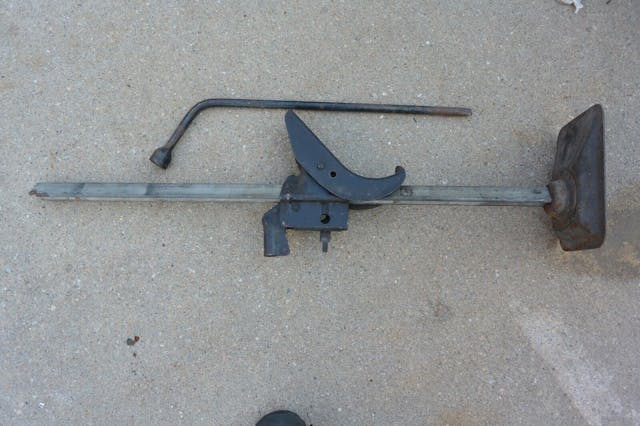
In a world of bumper covers, the thought of attaching a lifting mechanism to the exterior of your car and using it to lift the vehicle is some type of strange fever dream. It wasn’t always that way though. Flat tires have been around longer than the automobile and the need to pick up the car followed right along. Bumper jacks are good in concept but the lack of any safety catch or stabilization to keep from tipping over makes them treacherous to use. They still have utility in off-road situations but that can also make use even more dangerous.
Verdict: Keep as a reminder of how far we’ve come.
Brake pliers
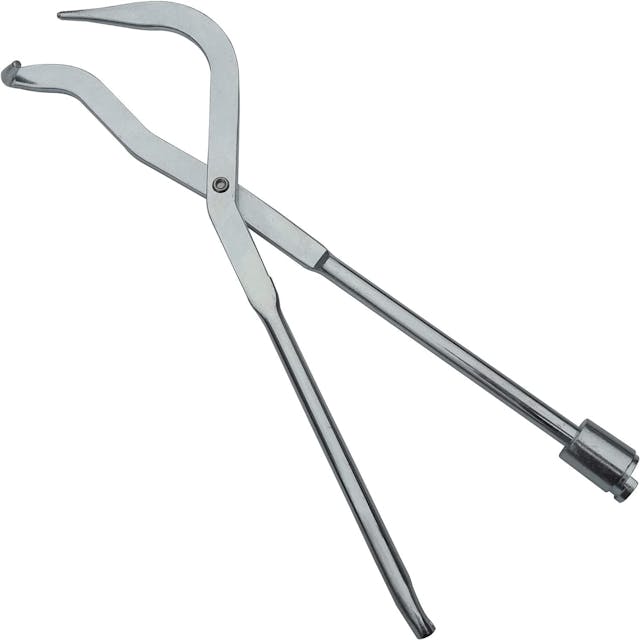
Somehow in the history of cars, there have been just two types of brakes commonly found behind the wheels: Drum or disc. Drum brakes can provide all the stopping power needed while also wearing like iron thanks to the enclosed and thus relatively debris-free nature of the design. That same design also has a handful of tension springs stretched carefully over small studs that can be serviced with groove-joint pliers and a screwdriver, but there are also brake pliers that rose and slipped from popularity right alongside drum brakes.
With modern materials and the relatively limited use of drum-brake cars, servicing drums has gotten less common to the point that while special tools can make the job easier it is only marginal and certainly not required.
Verdict: Keep them if you’ve got them but can likely pass if building your toolkit.
Growler
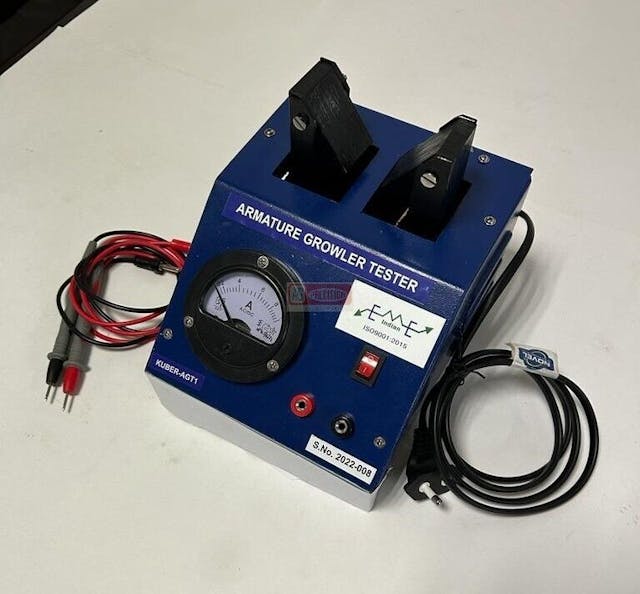
We aren’t talking about that curmudgeon of a mechanic who seems to only communicate in grunts and growls as the ratchet clicks to remove parts. No, the growler here is used to test the windings of a motor or generator. The armature is placed on a bed that flows alternating current into the windings. Using a ferrous rod to locate the magnetic field that will be created by a short makes for easy diagnostics. The price drop that came with the mass production and parts sharing between various models relegated these to hobby benches or the back room of specialist shops. Since rebuilding motors or alternators has become rare, these are practically a novelty.
Verdict: Keep if you’ve got the space, but often these find problems that are difficult to source parts to fix.
Vernier caliper

The increase in affordable precision has been quiet but amazing for at-home DIY projects. Good precision measuring devices used to be limited to the hands of skilled technicians and specialists in machine and fabrication shops. It took skill and training to properly use and read items like the vernier scale on calipers used in fabrication and precision machine work. Then digital calipers entered the market and the prices dropped year after year to the point that now a set of calipers accurate enough for most home use can be had for under $50.
Verdict: Use what you like and what works best for you. Regardless of what that is, be sure to keep any and all precision tools stored carefully to prevent damage.
Timing light
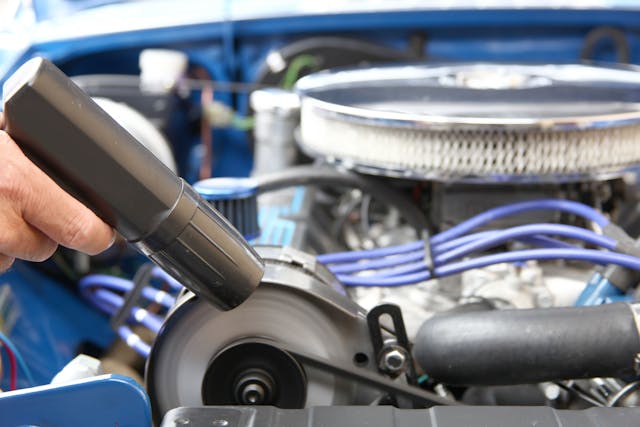
When we first wrote about tools that were fading from popularity last year, the comments section lit up with the suggestion that timing lights were left out. It’s been decades since a car rolling off the assembly line featured a tunable distributor, as the ignition is often now controlled by a computer working off data provided by a crankshaft or camshaft position sensor (or both) to control the firing of individual coils for each spark plug and cylinder. Adjusting the timing of the spark in the cylinder is changed with a laptop rather than a wrench and strobe light. Timing lights have been relegated to specialist shops and DIY garages.
Verdict: Keep it if it works, but consider a modern digital light if building a vintage-focused toolset as the features and capability have come a long way since the strobes of old.
Point file
Another from the ignition side of things. Even before computerized ignition was the advent of electronic or non-points-based discharge. Long gone are the days of having to swap a set of points on the side of the road or scratch off the char of the small faces to allow the coil to charge. A points file was handy for if or when a condenser would fail or the points would otherwise get crummy enough to not allow enough current through.
Verdict: If one is already in your glovebox, keep it for nostalgia’s sake and just in case. You never know who it might help.
Brake lathe or shoe arcing machine
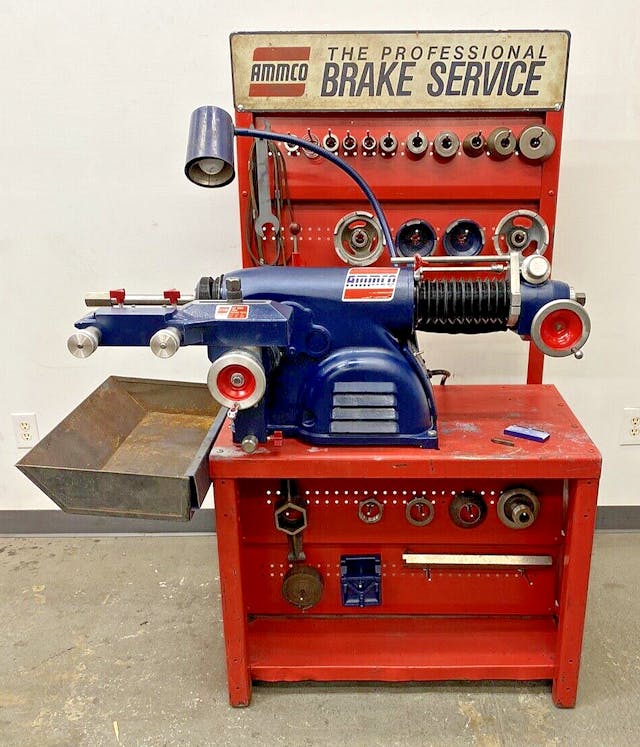
Drum brakes often have more swept area compared to disc brakes, but that additional friction material is useless if it is not in contact with the brake surface. The heat retention characteristics of drums can sometimes lead to warping that would previously be cleaned up by “turning” the drums to create a nice concentric surface around the shoes. While drums can still be found on modern cars the drums are often cast so thin that turning them is no longer an option and instead we must skip straight to replacement.
Shoe arcing machines do the same thing as brake lathes but set the radius of the friction material to match that of the drum. It’s critical for good brake performance on some vintage cars but has faded from popularity significantly due to the health concerns of grinding friction materials—especially asbestos.
Verdict: Save if you’ve got the space, or sell to a vintage shop if you don’t. We likely won’t see new versions of these tools made and they so help keep our cars safely going down the road.
***
Check out the Hagerty Media homepage so you don’t miss a single story, or better yet, bookmark it. To get our best stories delivered right to your inbox, subscribe to our newsletters.
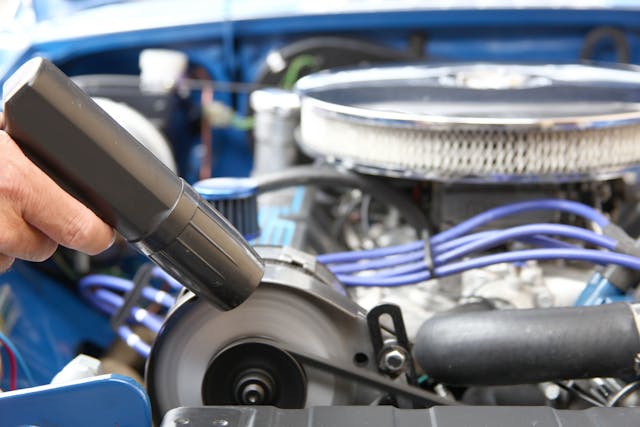
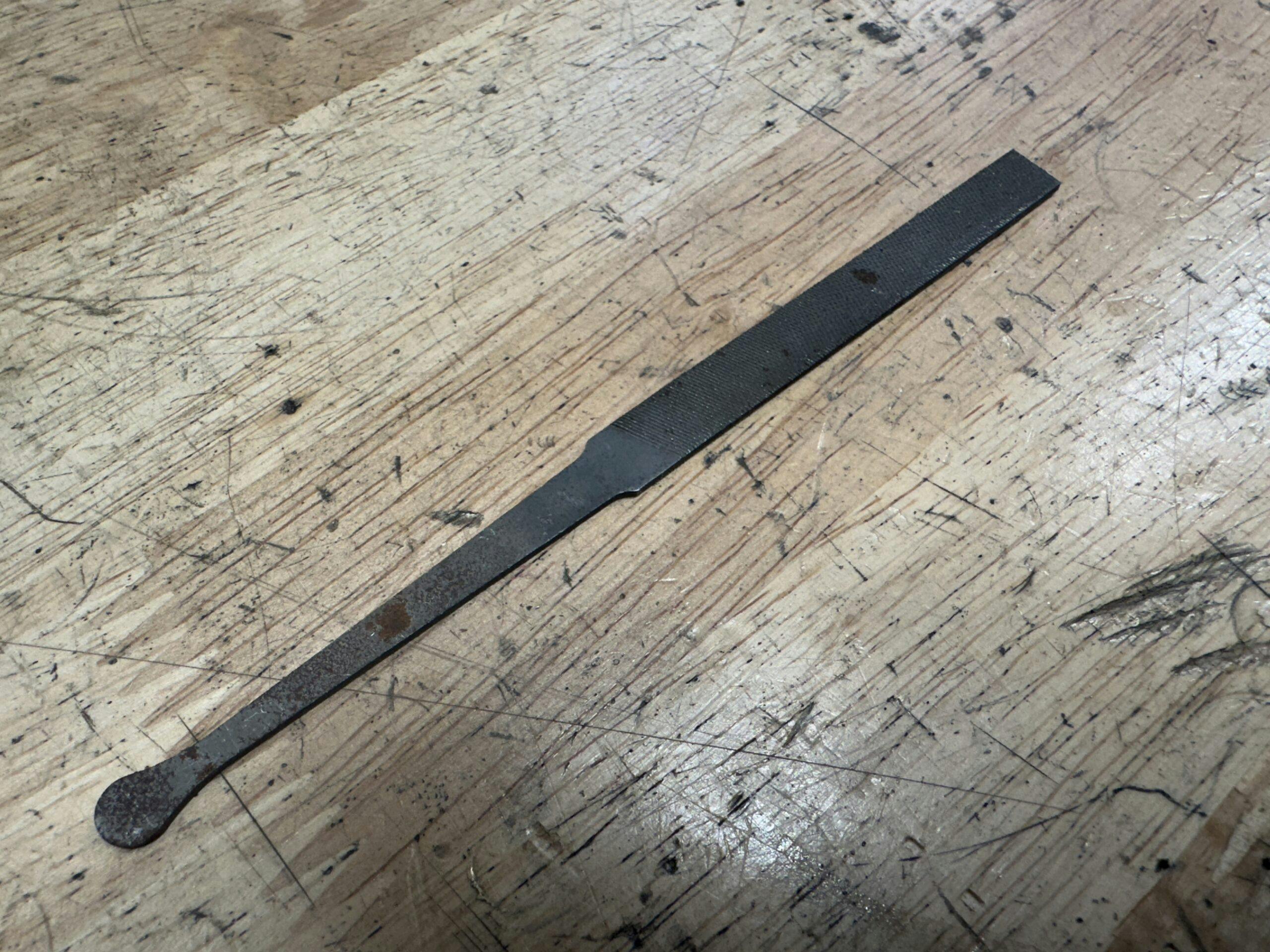
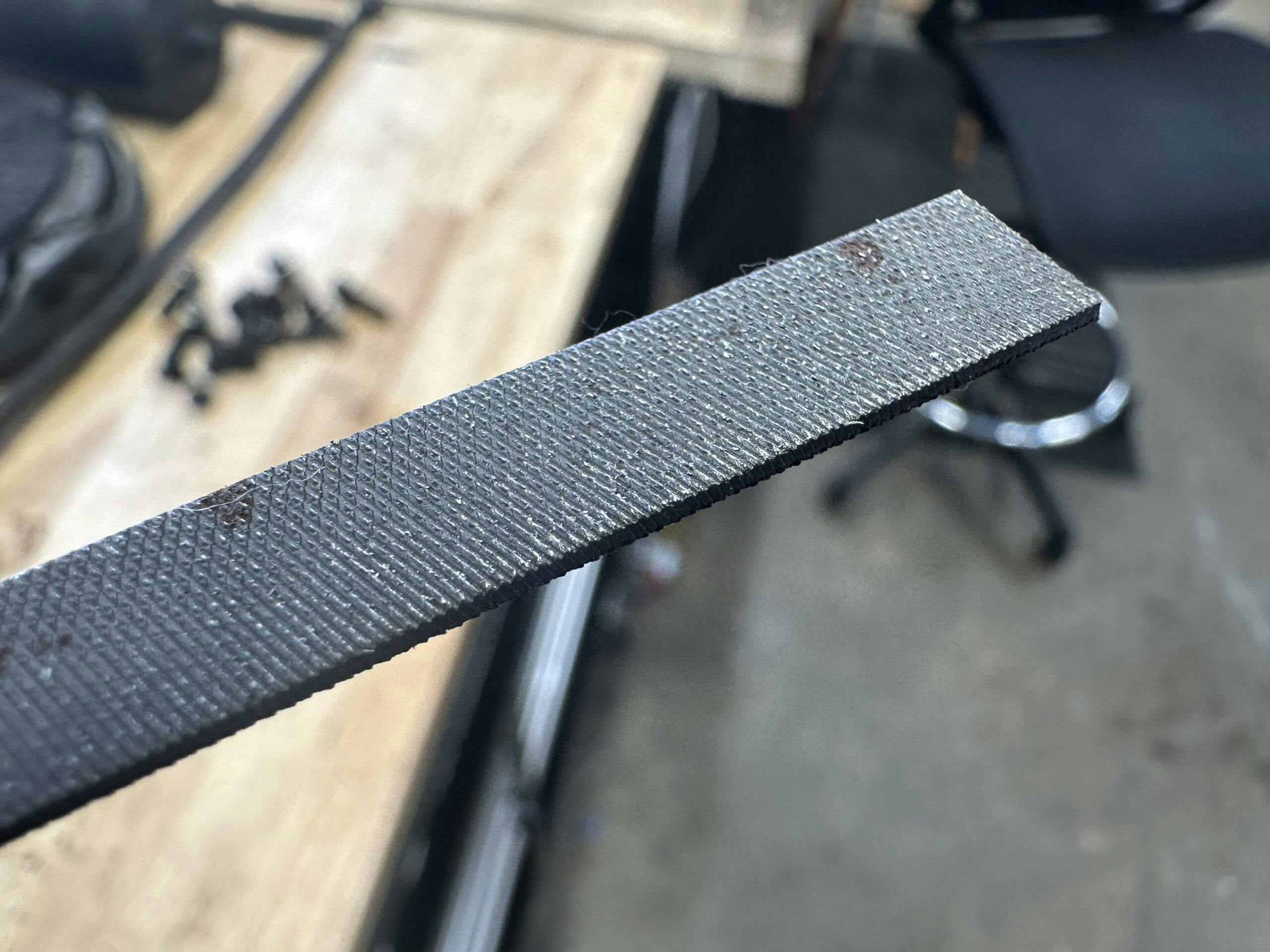


I grew up with feeler gauges, dwell meters, and timing lights. I still use feeler gauges to adjust my roller rockers over my Isky cam .028/.028 and just used my timing light to set up a Sniper EFI for spark management.
I think a few of us also have and understand vacuum gauges. Other obsolete tools are oil can spouts that would puncture the can. Oil cans long reach tip with a spring steel bottom that would sound like du-it du-it when you pressed on them.
I used my digital calipers yesterday to check crimps on PEX plumbing. I got these from my wife who found them at a garage sale for $10. They get a lot of use. Likewise the points file useful for brightning up relay contacts and burnishing switches. I have a Craftsman timing light and a dwell meter from my air cooled VW days. Still useful for those types of engines. Maybe I will sell the pair on e-bay.
Good article(s) & fun read! Looking forward to #3 in the series! It wasn’t clear this was a follow-up; the only clue being the title (7 ‘MORE’ old tools etc). Dwell Meter and couple other ‘tuneup’ tools were in the first article. Tried to paste link, but comment was apparently blocked?? Go to top of page, search for keyword ‘old tools’, it pops right up.
I only filed points if I was stuck along the road somewhere. It would get you home but once you file the coating off they don’t last long. Get a new set or better still go electronic. I have an electronic set in my 400 Pontiac for over 10 years and never a problem. Another tool I use sometimes is a brake shoe adjustment tool. We used to call it a brake spoon. If you have an old car you need the old tools to work on them.
Well, if you consider the mass of drivers currently, almost no one uses them anymore, or even recognizes these tools! Their loss, for sure; but then the Zen is out of driving nowadays, transportation evolving as it does. Still, oldsters aren’t giving up their Fred Flintstone era tools — yet! No plug-in diagnostic port on a ’51 Ford, or even ’71 Datsun Z-Car, folks! Wick
Even if you don’t use it to set the timing, A timing light is the easiest way to see if a cylinder is getting spark.
Kyle needs to spend some quality time with early cars. Morr than disk (huh) or drum, they have an array of brakes including external band, transmission, drive shaft, and even basic wheel friction levers on the earliest! Come on and play with horseless carriages – have fun and use many old tools!
I think I most all the hand tools listed.
I started playing in the 50s with British cars, nuf said. I have a set of SU tools that no one mentioned.
Brake Lathes are still needed today. Every car dealership and most repair shops use them. I know cause I have been selling them for over 40 years.
Your points file is missing the most important part, the little adjustable sleeve, with the slot to keep the file lined up with the points.
Your article reminds me of the day (many moons ago) I just got home from work and my neighbor was working under his 68 Caddy. It was suspended about two feet in the air on 4 bumper jacks. I pretended not to notice.
I’d like to add two odd/old tools from my dad’s collection…. A valve grinder and a seat grinder.
The brake lathe just made me feel old and nostalgic. Used one day in and day out for years in the 80s. It’s all the same but I’m quite sure that as master mechanics in the old days, we knew deep theory better, but today’s guys have their own set of skills.
I have most of them except for the grinding tools. I got some of them in 1964 when I was in school and bought a ’57 metropolitan.
I searched Amazon for a digital timing light that works on 6 volt systems. None of them do. I’ll keep using my old timing light for my 2 Studebakers.
I occasionally use my bumper jack to put the car on jack stands. It’s a quick method.
I still have a lot of these tools, but haven’t used them in years